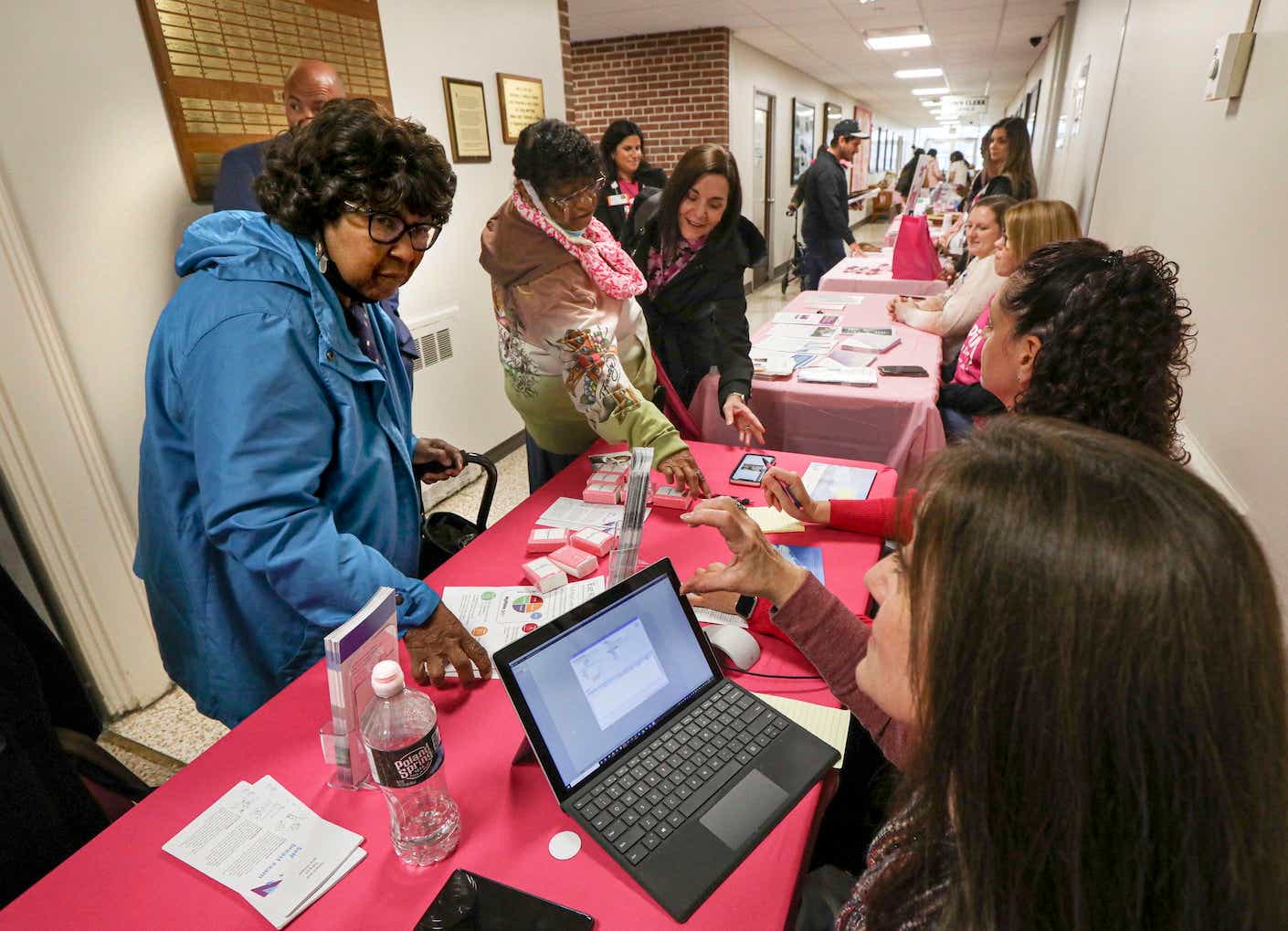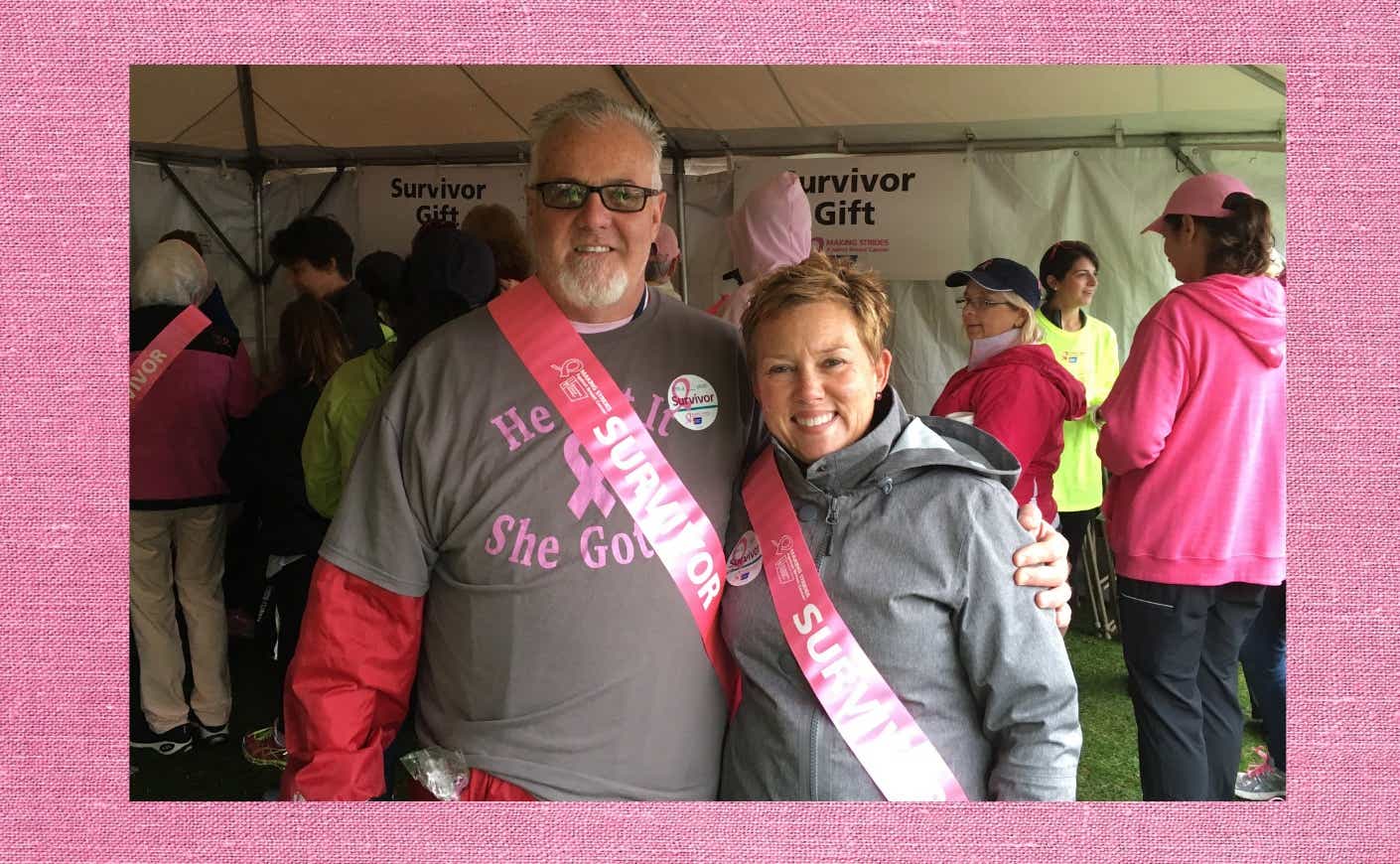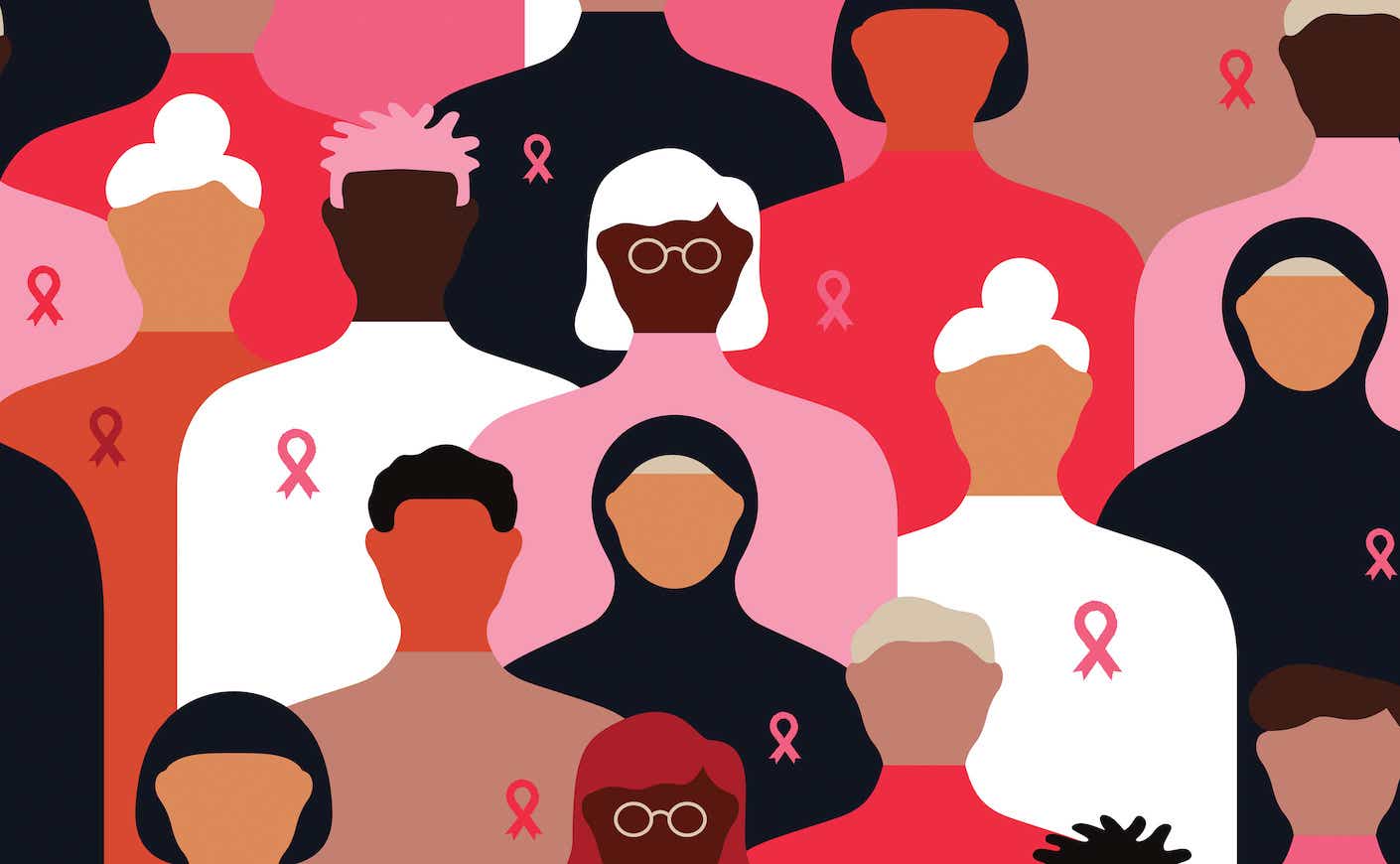Cancer has likely affected almost everyone reading this article — breast cancer specifically. Whether you’ve had your own brush with the disease or have watched others fight for their lives, the World Cancer Research Fund estimated that in 2020, “there were…18.1 million cancer cases around the world.” That year, 12.5 percent of all global cancer cases were breast cancer — topping the chart of global cancer incidences in both sexes. So, it’s likely you’ve at least known someone — family members, loved ones, coworkers, acquaintances, you name it — who’s been diagnosed with breast cancer.
That incidence rate is pretty heavy to process in and of itself. However, it’s also important to note that though cancer has touched so many lives indiscriminately, access to diagnosis and treatment is often unequal. We’ve previously reported on breast cancer being more fatal to Black women. While racial disparities in treatment are of huge importance, we wanted to get to the bottom of multiple inequities at play — many of which intersect and overlap.
Race
There’s a notable gap between the ways that white and non-white women experience breast cancer and receive treatment. Black women, in particular, have a 42 percent higher mortality rate than white women. Black women are also 2.7 times more likely to develop triple negative breast cancer than white women. However, a disparity in mortality rates isn’t the patient’s fault or some unpreventable inevitability. Linda Goler Blount, MPH, the president and CEO of the Black Women’s Health Imperative, argues that “women of different races who have the same exact diagnosis, treatment, and care will have the same exact outcome.” Rather, systemic and interpersonal discrimination can establish obstacles.
To start out, it’s important to establish that there’s less research available about breast cancer in non-white patients. Goler Blount explains that “we’ve only really studied breast cancer in white women.” This uneven data can skew treatment and doctors' perceptions of when their non-white patients need to be screened.
Regina Hampton, MD, board-certified general surgeon who specializes in breast cancer surgery at Doctors Community Hospital and is the co-founder and medical director for Breast Care for Washington D.C., points out that “under the age of 50, about 30-45 percent more Black and Latina women” have a higher incidence rate than white women. According to Goler Blount, developing cancer at a younger age gives the cancer time to grow: “Black women are more likely to have cancer younger, so their diagnosis at age 40 means the cancer might have started growing at 32. So when they get diagnosed, Black women have more advanced cancer.” However, Dr. Hampton says that since “providers don’t know about these statistics” they can easily misdiagnose a tumor as “just a cyst” because the doctor perceives the patient as being too young for breast cancer. While “there may be some genetic reasons” for higher incidence rates among younger non-white patients, Dr. Hampton says that there has historically been less genetic testing in non-white communities, so this field of research is still developing.
Even as scientists gather more data on non-white communities, Goler Blount says that new, recent information won’t necessarily reshape the ways that doctors operate: Med school textbooks haven’t been updated in decades, so doctors still work with old data that doesn’t include women of color. To make matters worse, physicians are less likely to ask women of color to get involved in studies that could lessen the racial gap.
The lack of data is only part of the picture: Interpersonal biases from doctors will also shape a patient of color’s experience. Goler Blount notes that doctors are less likely to recommend aggressive treatments to Black patients “because doctors think they won’t adhere to the treatment.” Additionally, non-white patients consistently express feelings of not feeling seen or heard by their providers.
Susan Harvey, MD, vice president of Worldwide Medical Affairs at Hologic, told Katie in a recent live event that unfortunately, “these disparities are increasing.” She also adds that Black women have less access to additional screening methods, which only exacerbates the problems: “Many Black women do not have access where they live to 3D mammography. These things add up and combine.”
Goler Blount says that gathering data for systemic change will at least begin shrinking this gap: “We need to look at the experience of various populations and develop screening guidelines.”
Lisa Newman, MD, chief of breast surgery at the NewYork-Presbyterian/Weill Cornell Medical Center, told Katie during the same live event that patients can help by contributing their own data to research studies: “For women who are diagnosed with breast cancer, please inquire about research opportunities and clinical trial opportunities. It's through the conduct of clinical research that we are able to identify more effective treatments for breast cancer. Unfortunately, Black women with breast cancer are less likely to be offered a clinical trial opportunity compared to white American breast cancer patients. And clinical trials are less likely to be available in many of the safety net hospitals, the public hospitals, which deliver with the care disproportionately to our communities of color.”
Socioeconomic status
Socioeconomic factors can also affect a patient’s path to diagnosis. Goler Blount states that “when you look at mortality by income, rich people have much higher survival rates.” That discrepancy happens because “low-income patients — no matter their race or ethnicity — are less likely to screen.” Not to imply that lower-income people don’t care about their health; rather, someone who can’t afford to take time off from work is less likely to get screened. Ditto for those who can’t afford childcare or transportation.
Dr. Hampton adds that while the financial constraints of going to get tested are challenging, a lot of lower-income women may simply be too busy to even consider their risk: “They’re focused on day-to-day living and daily survival. A lot of women put themselves on the back burner.”
Patients without health insurance are less likely to get screened and arrange treatment. Even with insurance, patients might pay at least thousands of dollars — more than most can afford on a tight budget. But copays, coinsurance, and deductibles quickly add up.
If someone is diagnosed with breast cancer, Dr. Hampton also mentions that the “cost of medication can be prohibitive depending on your insurance.” Additionally, low-income patients are more likely to receive their treatment at poorly-funded hospitals.
Providers may also hold biases toward patients who can’t always afford treatment. Goler Blount says that “sometimes, doctors mistake a woman who misses appointments as indifferent. Meanwhile, she has immediate, stressful issues.”

Access to resources
As Goler Blount says, “the system of care that exists today was built for people with resources.” Since cancer patients understandably require so many different resources, there are a lot of ways for patients to lose out.
Firstly, Goler Blount points out that some patients may not have access to means to prevent breast cancer: “These are barriers that prevent people from making the choice they would want to make for being as healthy as possible.” People who live in food deserts will have far less access to healthy foods and may have trouble maintaining a healthy diet. People who live in unsafe neighborhoods may be unable to get outside to exercise. This is troubling because research shows maintaining regular physical activity and a healthy diet prevents breast cancer.
Dr. Hampton also says that many patients haven’t had the appropriate education or experience to learn how healthcare really works. Consequently, a lot of patients struggle with health literacy and may not understand when or how they’re supposed to be screened. This illiteracy can also occur among those with wonderful health coverage: “I’ve had some late-stage cancer patients who have very good insurance.” Dangerous rumors about diagnosis and treatment can also circulate: Some patients think that mammograms cause cancer or that surgery may spread cancer. These beliefs might prevent early detection or delay treatment.
Healthcare illiteracy can extend to understanding free resources available to women. The American Cancer Society, for instance, “provides breast and cervical cancer early detection testing for low-income, underserved, underinsured, and uninsured women in the US.” But many women don’t know this resource is available.
That being said, while basic mammograms are covered, Dr. Newman points out that additional screenings aren’t free: Some states may require insurance to cover some or all additional screening costs, but that leaves many women in the lurch. Dr. Newman says that access to additional screenings often becomes entangled with other socio-economic issues, too: “Some of these disparities in terms of access to better higher level screening and diagnostic modalities are appalling. It comes down not only to the expense of that one mammogram screen, but could mean additional unpaid time off work, additional costs associated with transportation to the imaging facility, and a different additional cost related to childcare or elder care responsibilities for that individual woman.”
While there are many more free or low-cost resources available, Dr. Hampton points out that patients may be unaware of them.
Providers aren’t much help either, since they tend to focus solely on medical aspects of treatment. Patient navigators are skilled professionals hired by hospitals to help patients navigate treatment, but not every hospital offers these services. (Though if you’re searching for a patient navigator, this locator can help.)

Gender
This year, about 2,710 new cases of invasive breast cancer will be diagnosed in men. The American Cancer Society also reports that Black men have a 52 percent higher incidence rate for breast cancer than white men. However, many men don’t know they can get breast cancer. And those who do may feel ashamed about getting screened since social awkwardness around gender roles can be an issue.
Dr. Hampton admits that “we can do a better job of highlighting that men can get breast cancer.” She points out that most breast centers immediately and solely focus on women, though workups and treatments are pretty much the same for men. Dr. Hampton mentions that if men have a lump, “it’s a little more obvious and easier to feel” — however that doesn’t stop men from sometimes feeling uncomfortable in a female-focused space. Additional gender roles may affect men’s likelihood to seek treatment: “Men want to be ‘providers,’ so they may put their health on the back burner.” Consequently, men are often diagnosed at a later stage than women.
Data is much more scarce for trans and nonbinary patients. Goler Blount says that “there are trans physicians who are now advocating for research” but it’s not yet clear when data might be available.









